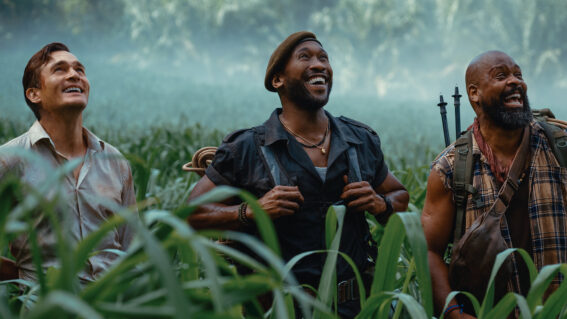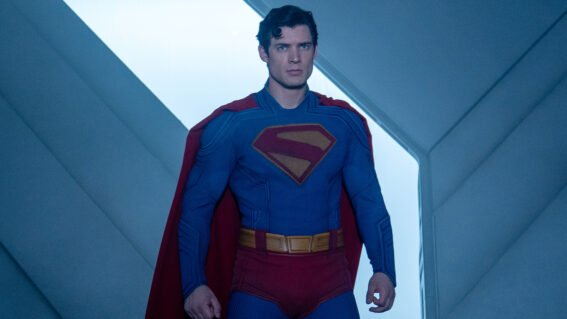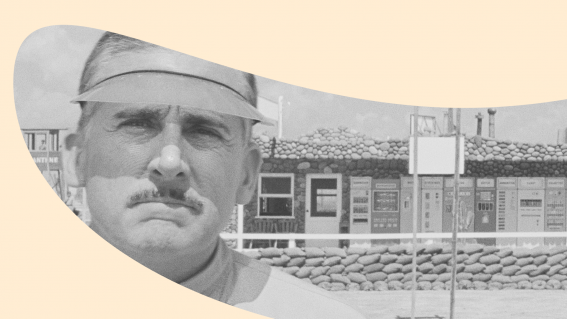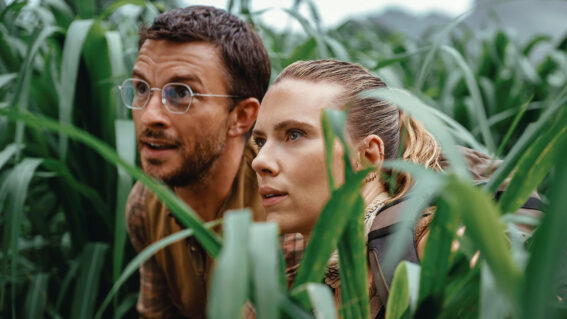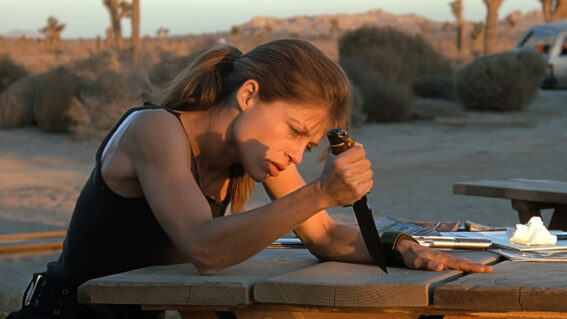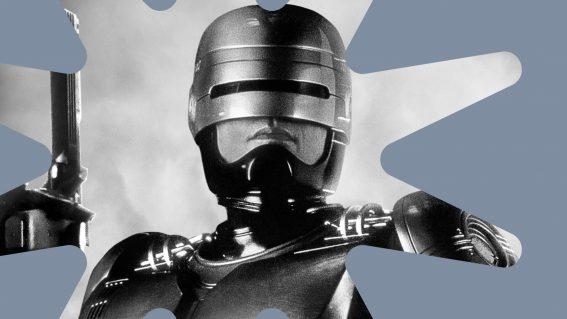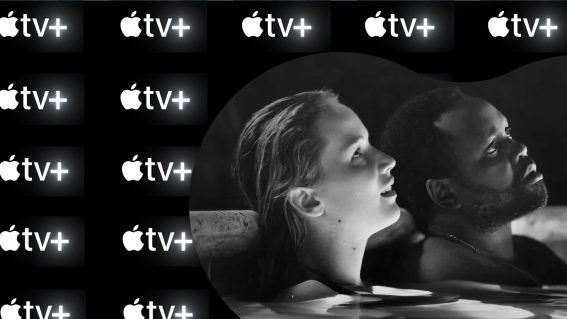The director of Aftersun chats with us about her exceptional Oscar-nominated debut
“I adored being on set even though every second was torture. I really have never been happier and never had such a clear sense of purpose.”
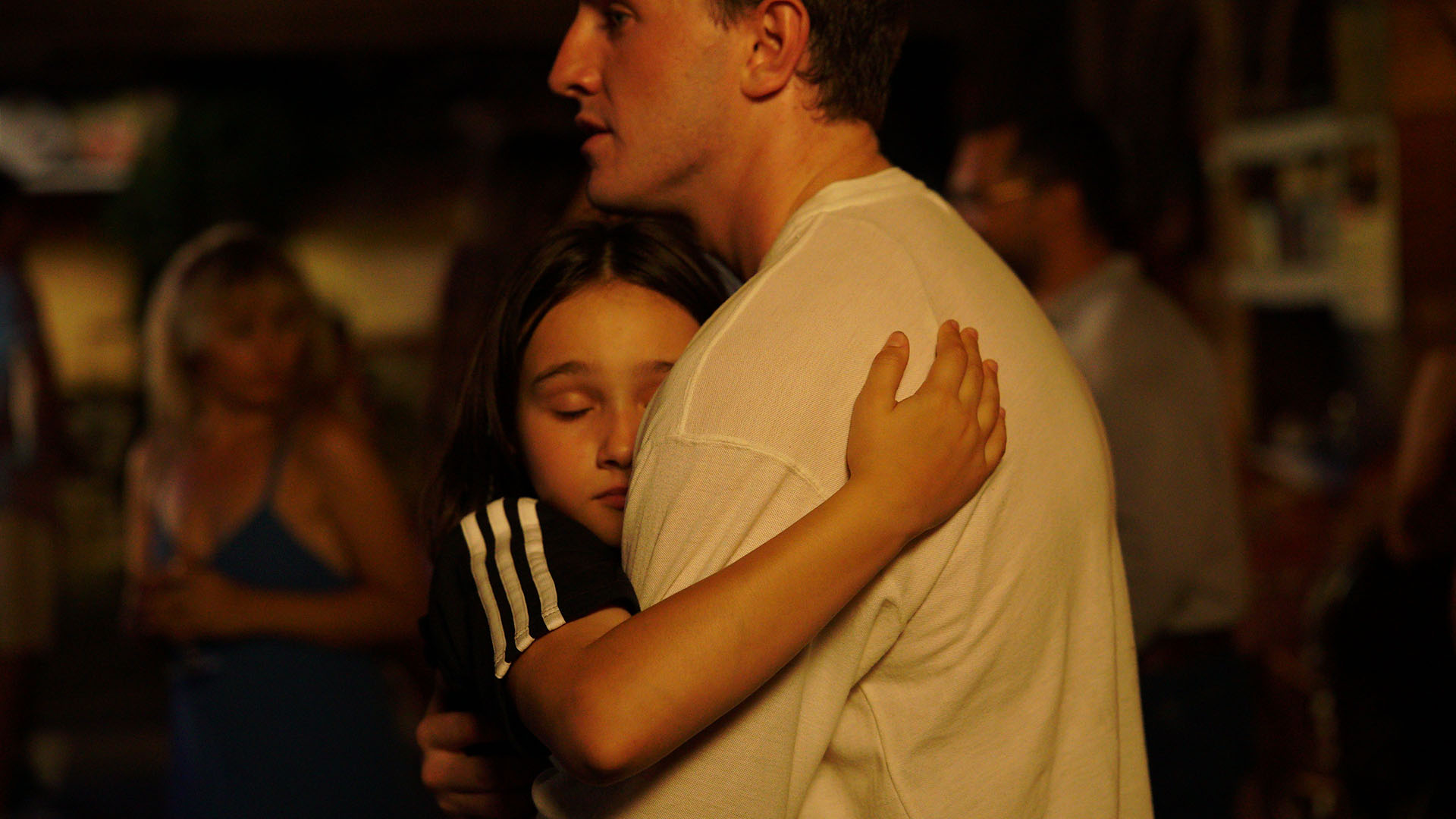
A fixture on end-of-year best-of lists (for those who’d had the chance to see it), as the astonishing Aftersun comes to Antipodean cinemas and online rental in the UK, director Charlotte Wells speaks to Amanda Jane Robinson.
Award-winning drama Aftersun reflects the shared joy and private melancholy of a holiday a young woman took with her father 20 years earlier, and has earned a Best Actor Oscar nomination for one of its leads, Paul Mescal. As Rory Doherty’s Flicks review notes, “the film has a heavy melancholic feeling to it, almost as if it’s pressing down on you throughout until it bursts in a spectacular, poetic way that signals a blistering new filmmaking talent”.
Director Charlotte Wells spoke with Amanda Jane Robinson, in a conversation that encouraged Wells to reflect on things like what her life looked like as she wrote the film, its rhythm, the films that inform it, and the process of developing a relationship between its two leads – one a professional adult actor, the other child with no screen experience.
FLICKS: How are you feeling about the film now?
CHARLOTTE WELLS: I’m feeling pretty good, astounded that the film is continuing to find audiences in many different places around the world and connect with people. At the same time, I’m seeing the end of the world with regards to this film, so it’s an interesting time. It’s been a long time.
What did your life look like as you were writing this film?
The same as it does now—nothing’s changed, other than at that point I was doing other work and now I’m doing no work. I really wrote this on my own time. I was adamant I didn’t want to share it with anybody until it was fully formed. Because it was so hard to describe, it felt easier to share the script at the point once I knew what it was for myself. I held off sharing it until then.
Who were those first people you shared it with?
It was Pastel who ended up producing the movie, Adele Romanski was the first person I shared the script with and luckily she was the first person that came on board, along with Mark and Barry (Jenkins) at Pastel. I’d met them two years earlier and I’d promised it to them—every time we met I said “just give me two weeks” because I knew it would only take me two weeks to write it, I just didn’t know when those two weeks would come. They finally stopped bugging me, Adele jokes that I was on their “no more breakfasts for Charlie” list, until I finally sent them the script and fortunately they were there for it.
Did you have an idea of people’s reactions to the film in your mind as you were writing?
It never occurred to me until the moment the credits rolled and people applauded and I wondered why they weren’t leaving the cinema in a more efficient fashion. It really just didn’t occur to me. I’d thought about the audience and I thought about the film’s likeability and how it would be perceived narratively, but its critical response just had never crossed my mind and I’m so grateful for that. Of course, that will never be true again, but it’s the naivety that comes with being a first-time filmmaker.
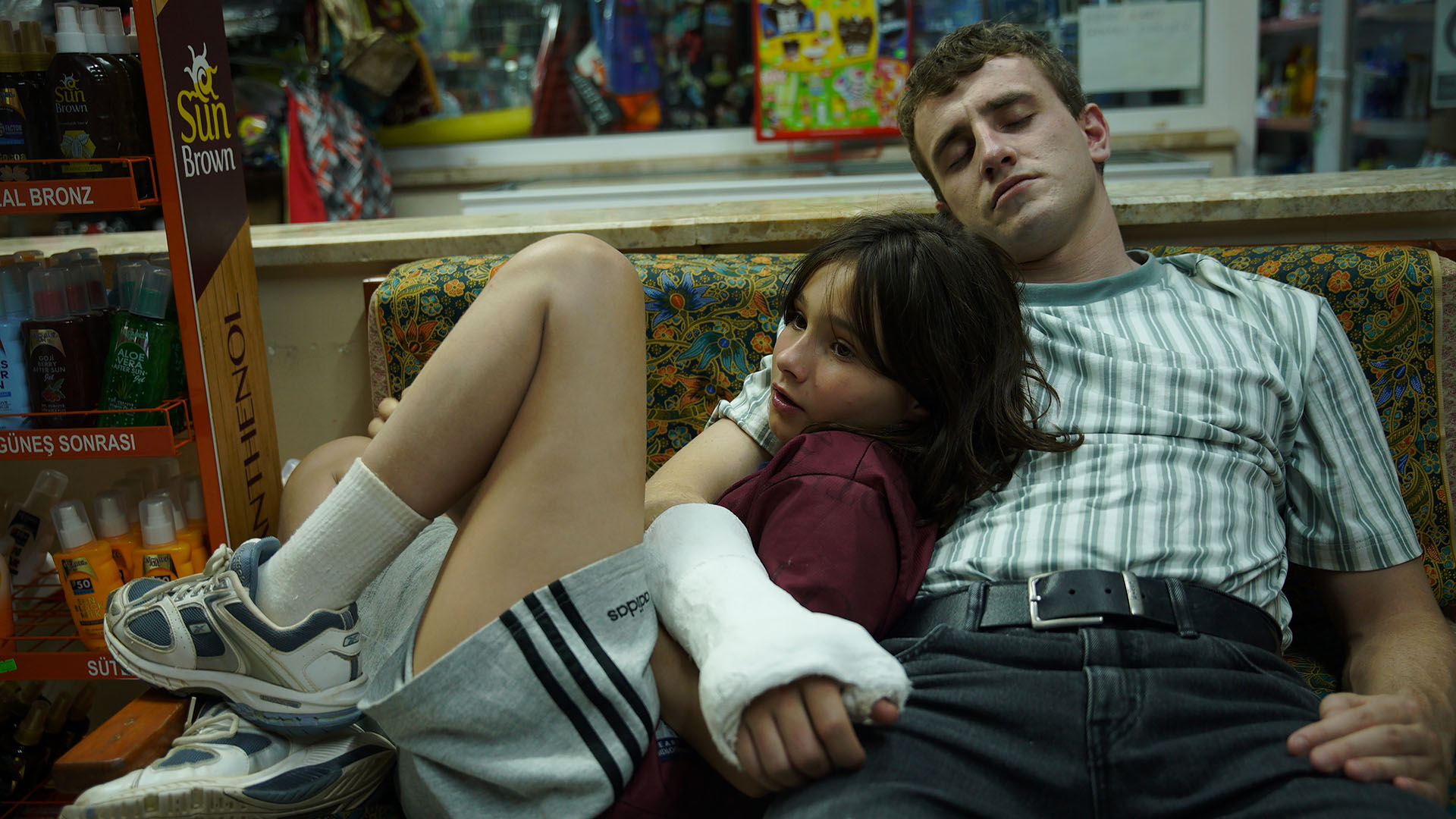
The cast in this film is incredible, and congratulations on directing Paul to an Oscar nomination – how did you work with Paul and Frankie to develop their relationship?
There’s a bit of luck there in that they did find a real relationship with each other in ways that certainly surprised Paul, I think he found a friend of sorts in Frankie. We had two weeks together before we started shooting and I’d imagined that as a kind of rehearsal utopia. In fact, I was with them very little because my attention was spread across many other elements of production, but they were together. They spent those two weeks going to the pool and to the beach and for ice cream and really got to know each other, and that bond continued to form over the next six weeks while we were shooting.
Really, by the end, it was eight weeks they got to spend together. Paul and I had done a lot of preparation before we got to Turkey because we knew the experience would have to centre around Frankie because she’d never performed before, because she was only eleven—I think she turned eleven on set. So we had laid that groundwork and read the script and had conversations about character and motivations. I’d downloaded everything I knew of the character onto him and let him use that as a foundation on which to build and to find his own access and empathy for Calum.
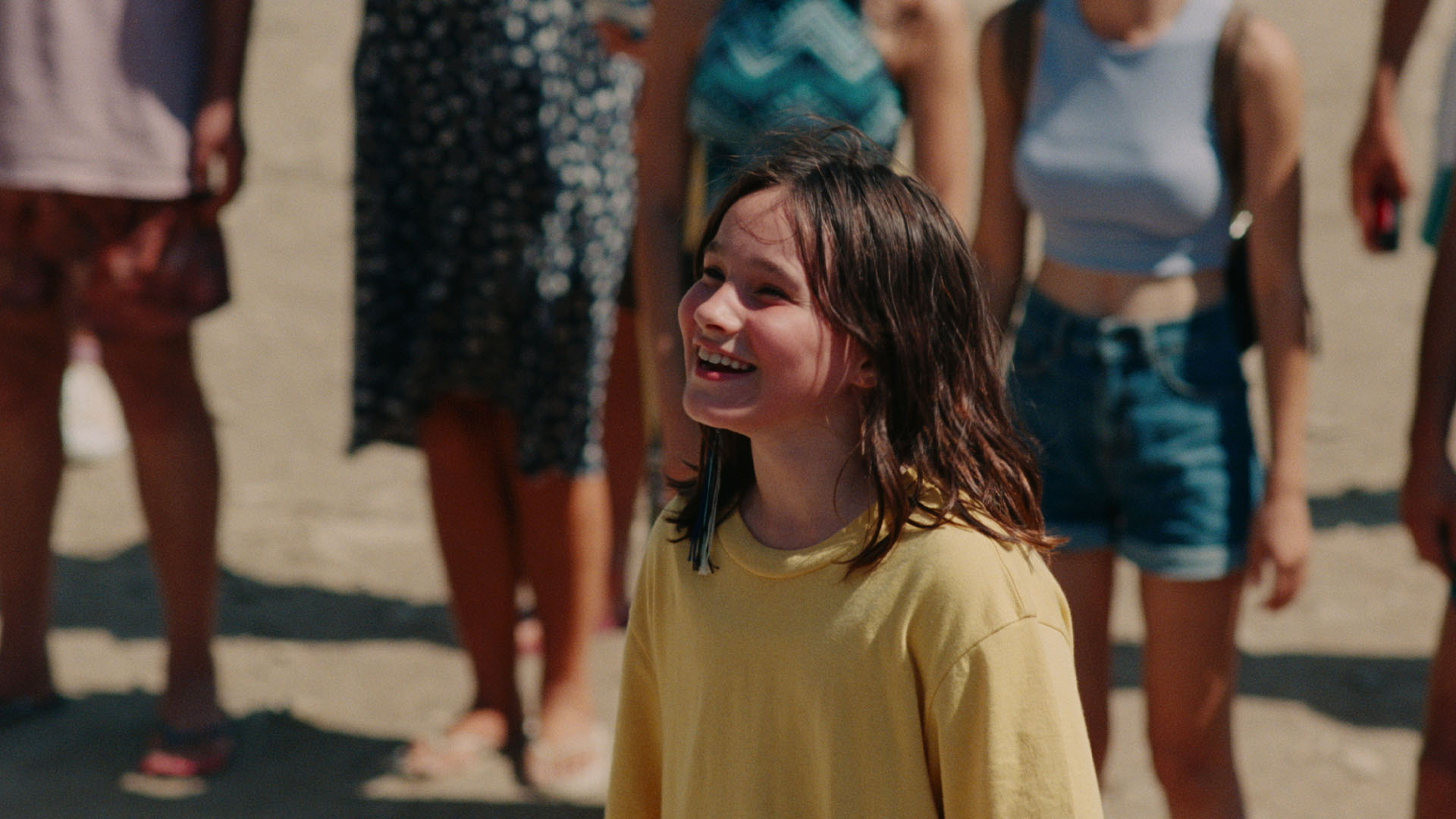
I read in an interview you said it was important that the character of Sophie be protected from what’s going on with Calum, and that he succeeds, for the most part, in protecting her from his own struggles. How did you approach talking about these struggles and themes with Frankie?
She didn’t really ask questions beyond what she knew. She’s a kid and is open to the experience she’s having at any given moment. And because she didn’t know, she didn’t know to ask. We worked predominantly on dialogue in those two weeks just to ensure she had it, we read through the script a couple of times together, but I made sure she never walked away with that physical script and that she stayed as present as possible.
Having never acted before that was the best that I could give her was to allow her to be in the moment and certainly to act—it’s not as though she were herself throughout the film, although she certainly brings parts of herself to it as all actors do—but she didn’t know anything beyond her part which I think was helpful for her and was also helpful for Paul.
You’ve spoken of Morvern Callar as a reference for the nightclub scenes, as well as Chantal Akerman’s films, specifically Le Chambre for that final 360-degree turn shot. Are there other films you were keeping close as you went through the process of making Aftersun?
It evolved so much over the course of the project, it was about eight years ago that it began. At first, I was just thinking about father-daughter dynamics; Paper Moon, Alice in the Cities was a really big reference, it’s kind of what inspired the scene where they’re doing tai chi at the roadside stop, Tomboy particularly for a kid of that age, but there’s also some really sweet moments in that film with her father including the sharing of beer, which is also a part of the film.
But then it came more about memory, El Sur, Joanna Hogg’s films, Terence Davies’ films, Margaret Tait’s Blue Black Permanent, just thinking about how to portray memory on screen and how to draw a connection between the past and the present, and whether a connection should be drawn between the filmmaker as an author and the memory portrayed on screen.
That was a question I grappled with for a long time, whether you need to know this was inspired by my life though not an autobiographical depiction of it. When it came to the edit we continued to watch things, quite a few docs, a lot of Ozu—particularly these interstitial shots of the environment we had shot for and had to place into the film.
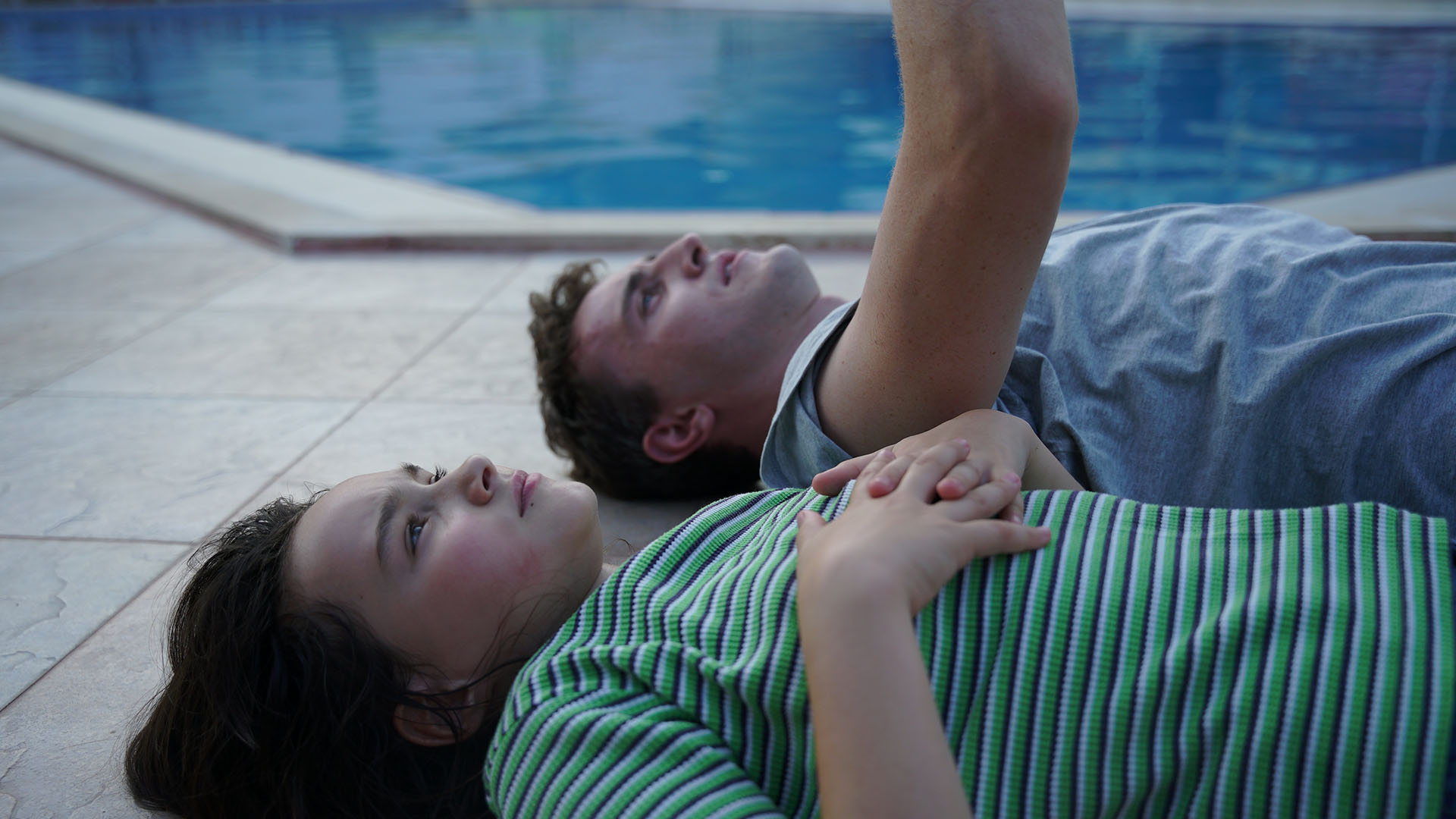
I’m interested in talking a little about the pacing. How did you land on the film’s rhythm?
Some of those moments are in camera and some are in post and some are in script, it was a real combination. The first cut of the film was about two hours forty minutes long, and that was really letting everything play out as it was written. My editor Blair and cinematographer Greg—the three of us went to film school together—we certainly share common taste but it’s not identical, and we have our own preferences and are into different things and are always hitting each other from slightly different directions which was good.
We’re all quite content just to let a shot roll. If anything we showed quite a lot of restraint not letting things roll as long as we could have—not everyone will agree—but certainly they still do roll. There’s a key moment near the beginning of the film where Calum’s smoking on the balcony and it’s a single shot and it begins as it was written in the script which is the conversation he was having on the phone plays over the shot of him untying her laces and we find her on the bed, and then the camera zooms over her.
This was really the language that we started to build with Greg about how to convey this perspective of adult Sophie as the overarching perspective of adult Sophie and how to feel that very, very subtly and seeing how much Calum was alone. It wasn’t written to be one shot, but that was something Greg found on set. Even in the edit it wasn’t one shot until the very end, when we realised this was a way to guide the audience into how we were approaching pace and detail in the film and our language with the camera and it felt instructive in a certain way, to encourage the audience to lean in and to be willing to be patient and pay attention to sound and picture.
What surprised you about the process of making this film?
I adored being on set even though every second was torture. I really have never been happier and never had such a clear sense of purpose. There was a real joy in the collaborations and in having people who care so much to hold me accountable to the vision I set out to create. They made it better because they’re incredibly talented in and of themselves. I certainly learned a lot along the way. The sense of fulfillment in that process was surprising and also encouraging, because this is what I have decided to do with my life and it would have been a drag to discover everything I’d been working for for so long didn’t in fact make me happy.









